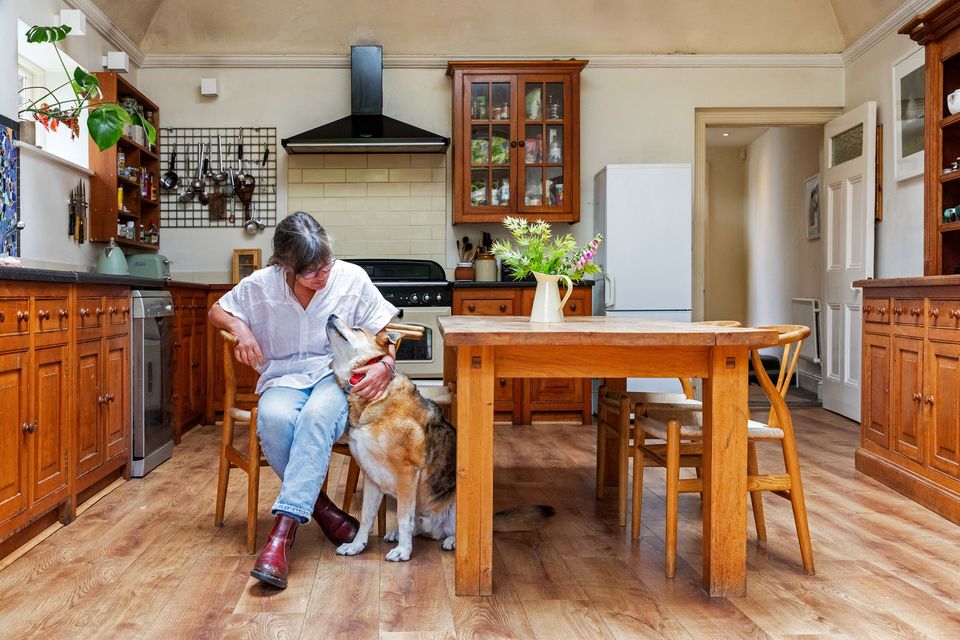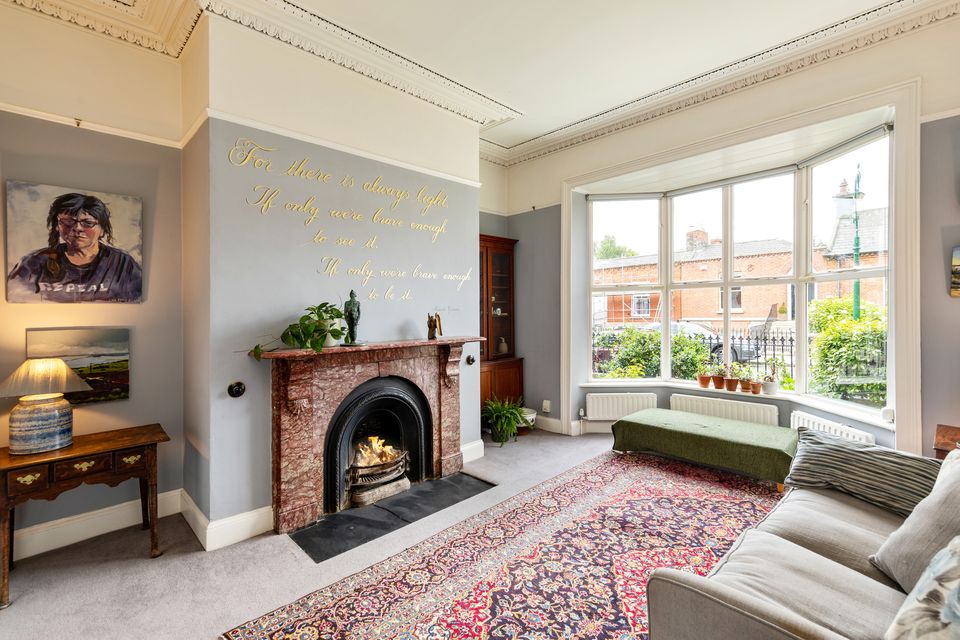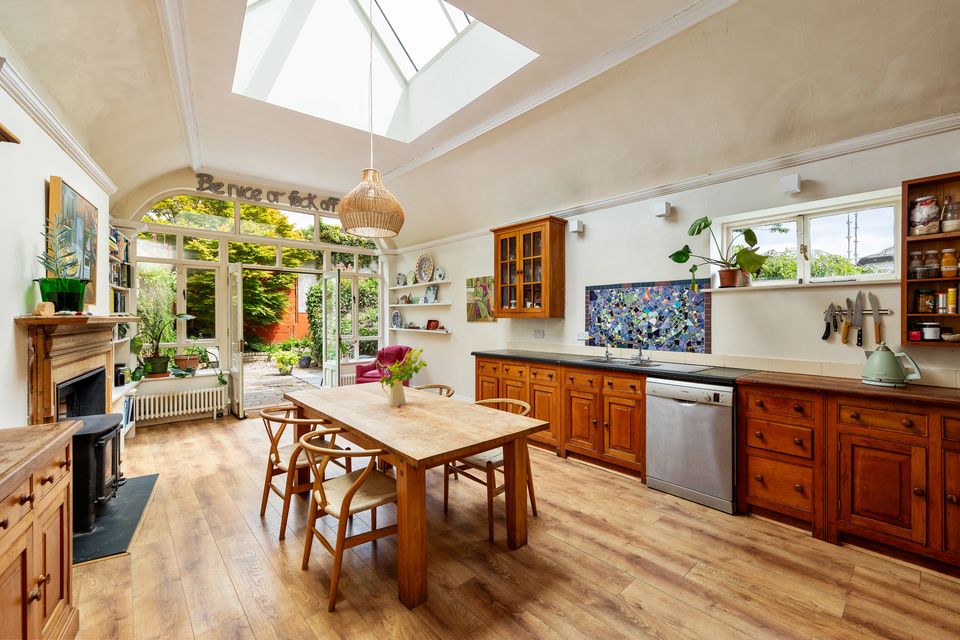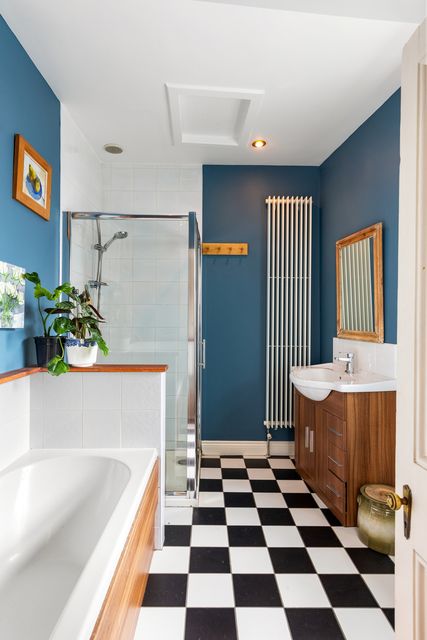Entertainment
An artist’s Dublin 6 home has links to a man who started a gold rush

Asking price: €1.85m
Agent: Sherry FitzGerald (01) 269888
Did Captain Champagne’s gold reserves facilitate a life of leisure in Dublin for his daughter Camilla?
The grandly named Camilla Alicia Vincentia L’Estrange who lived in luxury at No34 Leeson Park Avenue in Dublin’s Ranelagh with her three lady servants and her niece Louisa wrote down her source of income in the 1911 census form as simply “dividends”.
Camilla’s effervescently named father, the Cavan-born Captain Champagne L’Estrange, was responsible for discovering vast gold reserves in the wilderness of Novia Scotia which led to the 1860s Canadian gold rush.
The British artillery officer had been present at the bloody siege of Sevastopol during the Crimean War and would later end up serving in Malta as a magistrate.
The entrance hall
But the most intriguing chapter in his career was his exploration of the Tangier River in Novia Scotia with the help of his native Mi’Kmaq guide Joe Paul.
There in the Mooseland, the pair discovered vast new gold fields in 1858. Joe Paul later brought a local farmer back to the same site and the Novia Scotia gold rush of the 1860s and 1870s exploded.
In the following decades, more than a million ounces of the stuff would be mined in the Mooseland.
It would be reasonable to assume that Captain Champagne cashed in to some degree; or, at the very least, was rewarded by the British authorities for his discovery; which ended up bringing in the modern equivalent of US€2.3bn in bullion. And that some of this loot might have channelled down to the unmarried Camilla.
Artist Caroline Canning in the kitchen with Reno
No34 is believed to have been constructed in the 1860s, along with the five adjoining properties, by a builder who completed the largest (No34) for himself and the other five for each of his daughters. Number 34 is one floor taller than its neighbours.
In 1990 it became home to the Dublin-based artist Caroline Canning who acquired it with her late husband Mike at a time when the house came for sale with two sitting tenancies.
“Mike had a friend who had agreed to buy it but couldn’t come through on the deal and he asked us if we’d look at it,” says Caroline.
In those days, there were still lingering sitting tenancies in many older Dublin homes. Sitting tenants were entitled to a tenancy at a rent fixed until their death, no matter who owned the property.
The front reception room
A young couple could therefore acquire a fine home for much less than market value so long as they were prepared to share their home with others for the duration of their tenants’ lives.
Caroline and Mike agreed to buy the property before meeting the tenants and their future house mates; a family who lived in the basement and a 90-something-year-old lady who lived in what is now their kitchen/dining room.
“Miss Tallon was a sort of a Miss Havisham,” says Caroline. “We think she might have been related to the L’Estranges. Her room was always dark, covered completely in black hand-painted wallpaper and she drank her tea from fine china.
“She had a plastic Christmas tree in the corner which she plugged in for Christmas and left it there unplugged for the rest of the year.
“She would stride up to us every day and ask us where the port was. I think she thought we were the servants.
“In the basement was a husband and wife who had raised five children there and one was still living with them when we bought the house.
“Sharing didn’t bother us at all. In fact, we got the house for €68,000. We couldn’t have afforded it without the sitting tenants who put a lot of buyers off.”
In the end, Miss Tallon went to live with her nephew while the older couple living below were in situ for a few years but then passed away.
In the years following, Caroline and Mike raised three children at No34. He passed away in 2004.
A view of the former music room, now a kitchen/diner
“The house was in pretty rundown condition when we bought it, but unlike a lot of the period properties around us, its layout and period features were still pretty much intact,” says Caroline.
“The house had been extended in 1890 to provide a music room, which became Miss Tallon’s home and later we converted it into the kitchen. The acoustics are still wonderful. This has also been my studio for work.”
Perhaps a legacy of Madame L’Estrange’s era is a ‘secret tunnel’ which runs from a courtyard in the basement area to emerge in the garden.
“We haven’t got a clue what it was for, but it provided great fun for the kids and the cats through the years.
“This house has been remarkably flexible for our needs. A friend lived for a time on the top floor and my daughter, her partner and their baby lived in the basement until recently when they moved to Wexford.”
Now with just Caroline and one of her adult children in situ, it’s time for the family to sell up.
“I’d really like a smaller house with a garden big enough for a detached studio for my work.”
Accommodation spans 3,337 sq ft, the equivalent of three average three-bed semis, and is laid out over four floors.
At garden level is a self-contained, own-door apartment with a large open-plan living room, dining room and kitchen, a bathroom and a double bedroom with access to a courtyard.
The family bathroom
At ground floor level there are two large receptions, both with rose quartz chimney pieces. There’s the large former music room (now a kitchen/dining room) with access to its own courtyard garden and there’s also a WC and a utility room on this floor.
On floors two and three are four double bedrooms, one en suite, and a family bathroom.
The house is within reach of the Luas at Ranelagh Village, Rathmines and walking distance from the city centre.
Meanwhile, Caroline is planning to exhibit her work at Ib Jorgensen’s new gallery, due to open at South Anne Street.
Sherry FitzGerald seeks €1.85m for No34.














